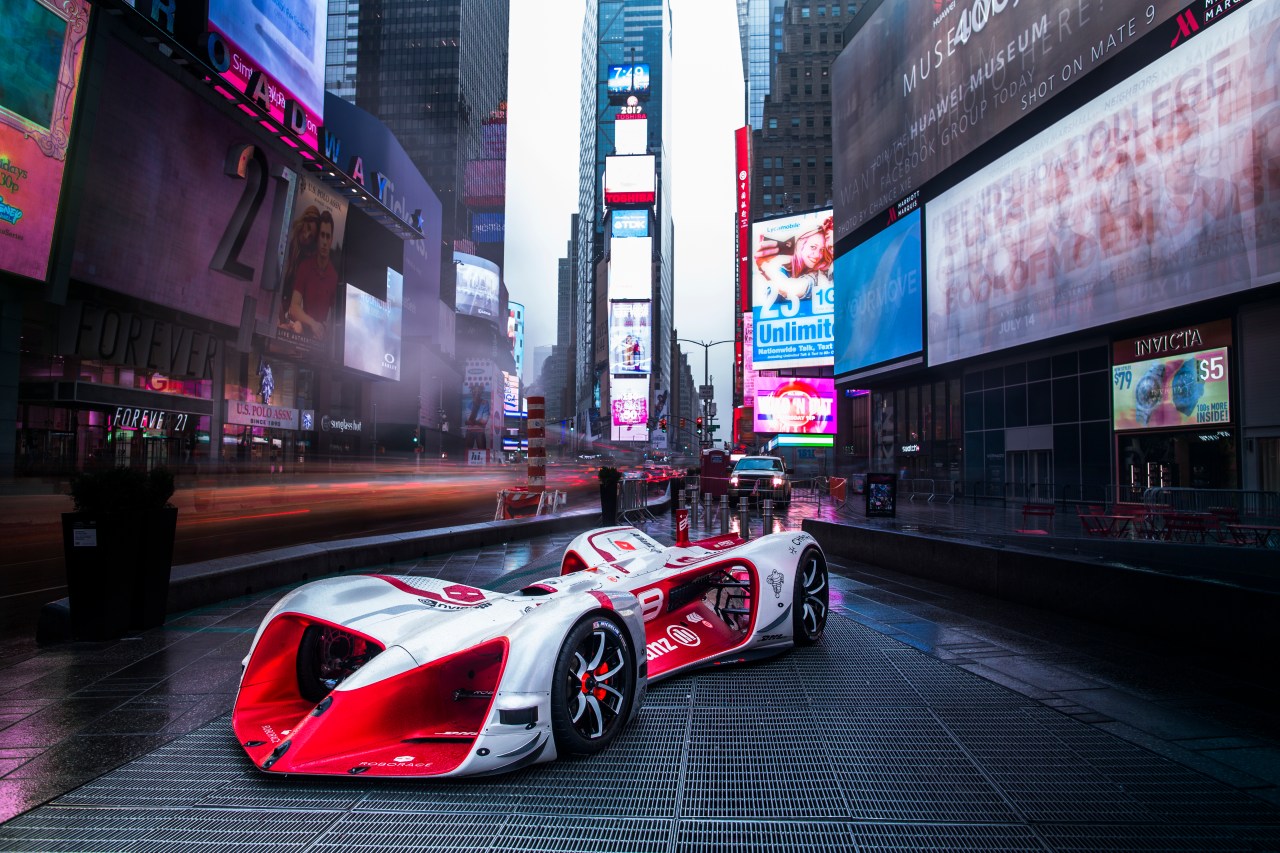This past weekend, amidst the electrifying atmosphere of the Formula E races in New York City, a technological marvel took to the track—the Roborace DevBot. Promoting both the thrill of motorsport and the cutting edge of artificial intelligence, this innovative machine showcased how far we’ve come in the realm of autonomous driving. Join us as we delve deeper into this extraordinary event that merged fast-paced racing with pioneering technology.
Unleashing the DevBot
The DevBot, with its distinctive bubble-like cockpit, isn’t just a marvel of engineering; it represents an important step in making fully autonomous racing a reality. While the sleek and gleaming Roborace cars awaited their turn, DevBot lit up the course during gaps in the day’s racing schedule.
Equipped with an advanced array of sensors and cutting-edge GPS technology, DevBot demonstrated its capacity to learn in real-time, navigating a pre-unmapped track. Unlike traditional racing cars that rely on pre-programmed routes, DevBot imbues the essence of a learning AI—cognitively adapting as it goes. This was not speed but intelligence in action.
The Learning Experience on Display
- Initial Laps: During its practice run on that bright Saturday morning, DevBot managed to take cautious laps, gradually gaining familiarity with the intricacies of the New York circuit.
- Handling Challenges: Observing the car navigate Turn Six was particularly enlightening; it proved to be a challenging section that required some human intervention. This segued beautifully into the next phase of its learning process.
- Fan Reactions: The responses from racing enthusiasts varied. While some were captivated by the AI’s educational journey, others longed for the swift, raw performance usually associated with racing—a stark contrast to DevBot’s slower, methodical approach.
Advancements in Autonomous Technology
Despite its limitations in racing speed, DevBot’s true potential lies in its ability to learn from each experience. Imagine a world where cars can not only drive themselves but also adapt their driving style based on real-time conditions and past experiences. The implications for not just racing, but the automotive industry as a whole, are profound.
The excitement escalated when a Roborace spokesperson shared that following the event, DevBot successfully completed laps autonomously, a triumph many eagerly anticipated. This progress adds value to the argument that we may soon witness a fleet of driverless cars racing head-to-head on global tracks, enhancing the spectacle of motorsport.
The Road Ahead
Though the notion of completely driverless races remains a tantalizing prospect, it seems we are still in the formative stages. The optimistic vision of a 2017-2018 racing season filled with autonomous vehicles may be postponed, but as we witnessed with DevBot’s continuous advancements, each lap brings us closer to that reality.
A pivotal aspect of this journey is collaboration among engineers, programmers, and creative minds in the field of artificial intelligence. As we advance into a new era of racing, it’s crucial to create a community that supports innovation, encourages experimentation, and celebrates each milestone achieved.
Conclusion: Racing Toward the Future
The Roborace DevBot’s demonstration in New York is about more than just autonomous cars; it’s a glimpse into the future of vehicular technology. While challenges remain, the journey is riddled with learning opportunities and potential breakthroughs. Roborace stands at the forefront of a revolution that may redefine how we perceive racing in the coming years.
At **[fxis.ai](https://fxis.ai)**, we believe that such advancements are crucial for the future of AI, as they enable more comprehensive and effective solutions. Our team is continually exploring new methodologies to push the envelope in artificial intelligence, ensuring that our clients benefit from the latest technological innovations.
For more insights, updates, or to collaborate on AI development projects, stay connected with **[fxis.ai](https://fxis.ai)**.

